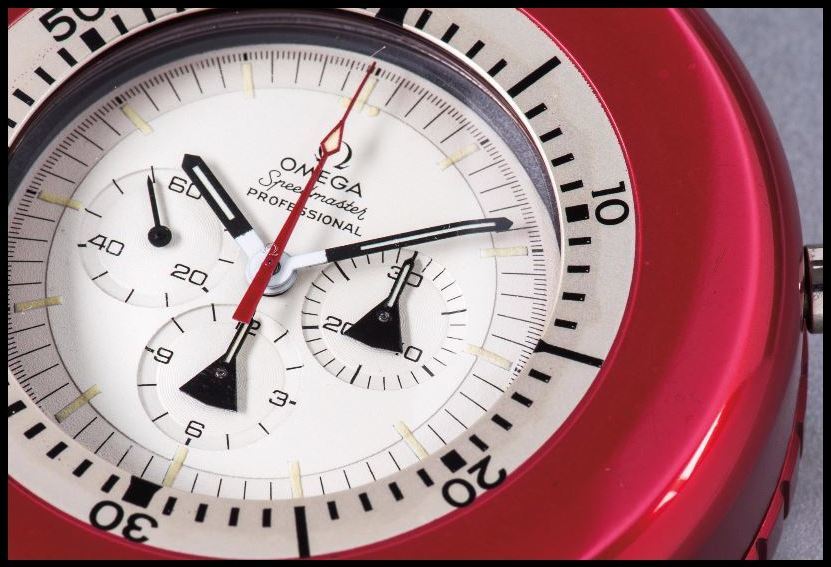AS THE minutes and seconds tick down to 2017, it is timely to illustrate a watch that is truly out of this world – a rare stainless steel prototype Omega Speedmaster made for NASA in the early 1970s to survive in extreme temperatures.
The Omega Speedmaster, introduced in 1957, is considered by many the “holy grail” of watches – witness as evidence of this the £38,000 taken in September by McTear’s of Glasgow for a fine early example.
Originally targeted for an ‘active clientele,’ the Speedmaster achieved worldwide fame when chosen by NASA in 1965 to be the official timekeeper for their space flight missions.
Under the cover of the codename ‘Alaska Project,’ Omega worked in secret to create the perfect ‘flight qualified’ space watch for astronauts. The code-name ‘Alaska’ had nothing to do with the cold temperatures of the American State, but was chosen to ensure the project would remain as secret as possible in case of any industrial espionage. But following the cancellation of the Apollo missions after Apollo 17 there was no immediate use for the Alaska Project’s test-watches, so the project was temporarily terminated.
In 1971, Omega began work on a continuation of the project, known as ‘Alaska II,’ which involved several further prototypes. These Alaska II test-watches were delivered to Houston at the beginning of 1972.
A Speedmaster ‘Moon’ watch recently sold by Phillips in Geneva was one of the Alaska II prototypes.
Part of the Omega Museum until sold for around £50,000 in 2007, this Speedmaster was accompanied by a red-anodised, thermo-protective aluminium case which served as a protective heat shield. The dial was finished in white, to reflect light rather than using the Speedmaster’s traditional black dial which absorbs light, and would therefore retain heat. Additionally, the dial was coated with zinc oxide, a material known for being highly resistant to solar radiation.
Its exceptional original condition suggests that it was probably never worn. Scholarship suggests it is one of only three surviving examples of the Alaska II project watch with the original protective case, one in the Omega Museum and the other in a private collection.
Among the rarest of all Speedmasters, it sold for 156,250 Swiss francs, equivalent to around £125,000.
